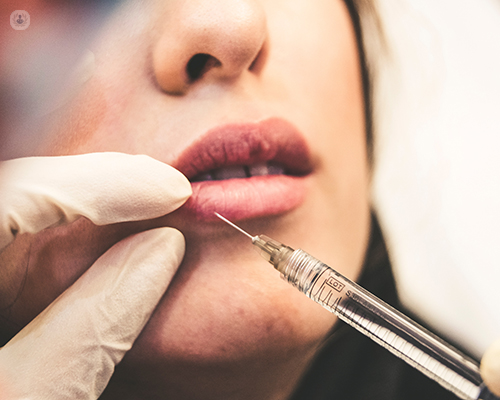Dermal fillers vs Botox: which is the better option for me?
Autore:What are dermal fillers used for?
Dermal fillers are primarily used to volumise the face, which in turn slows down the aging process. Non-permanent Hyaluronic Acid (H.A) is the most common dermal filler used by cosmetic clinicians. The dermal fillers contain genetically modified hyaluronic acid, which are differentiated by their consistency.
Some dermal fillers are very viscous and are generally used in the cheek area, while others are elastic. Clinicians prefer to use elastic fillers in the lips.

How are dermal fillers different to Botox?
Dermal fillers are primarily involved in sculpting the tissues and restoring lost volume in the face. The dermal filler bonds to the residual collagen, which slows down the degradation of the H.A by the endogenous hyaluronidase.
Immediate results are common and patients can expect the results to last for at least a year.
On the other hand, Botox acts by paralysing the muscles in the face. It is used to treat fine lines and wrinkles. The muscles take several days to respond to the treatment and after several months the action reverses.
Are dermal fillers safer than Botox?
There are more potential complications with Dermal fillers than with Botox, therefore it is not safer. However, it is not necessary to compare the two treatments as they are usually implemented in different parts of the face and used to treat different problems.
Are dermal fillers safe? Are there any side effects?
Dermal fillers are safe to use when the product is well regulated and administered by clinicians who have been appropriately trained to inject the materials. It is also necessary that clinicians who administer treatment have the knowledge and expertise to treat any complications which may arise.
Short term side effects which may occur include short-term needle-stick injuries such as redness, swelling, bruising, bleeding or itchiness.
Longer term complications include infection and biofilms, herpes infections, vascular occlusions and delayed-onset granulomas. However, long-term side effects are very rare.
At what age should I consider getting dermal fillers?
It is advisable to wait until you are over 18 before embarking on these treatments. Older patients should consider their medical history and medication as a contra-indication to dermal fillers, no matter what age they are.


